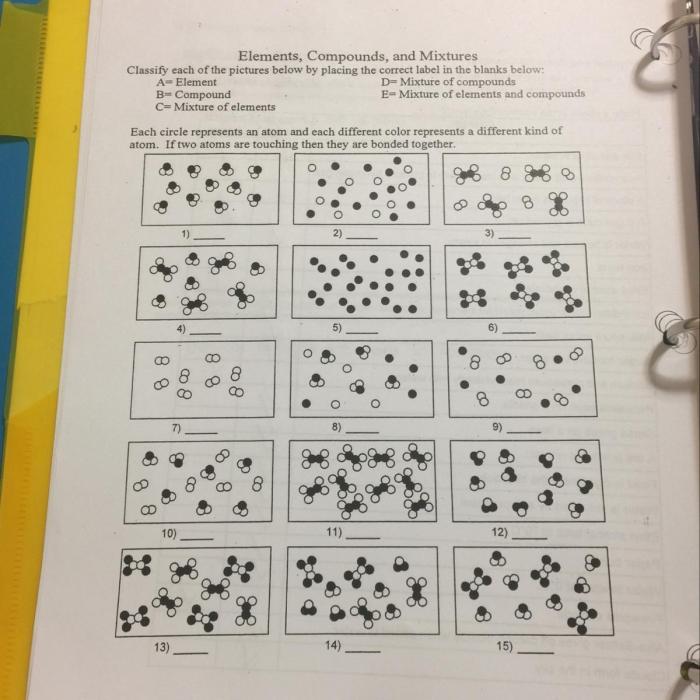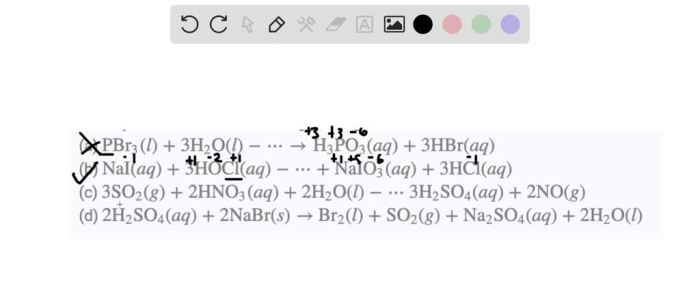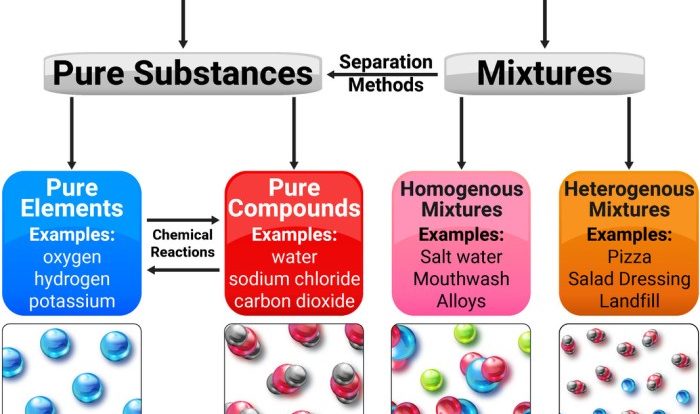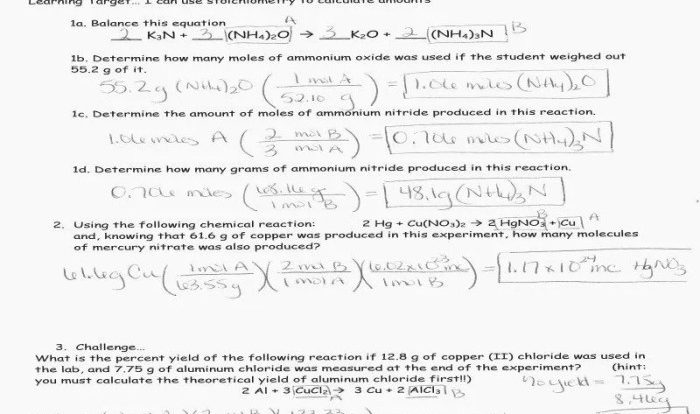Elements compounds and mixtures worksheet answers – Embark on an educational journey with our comprehensive elements, compounds, and mixtures worksheet answers, meticulously crafted to unravel the intricacies of these fundamental chemical concepts. This authoritative guide will illuminate the distinctions between elements, compounds, and mixtures, empowering you with a profound understanding of their properties, uses, and real-world applications.
Our interactive worksheet delves into the fascinating world of chemistry, providing a hands-on approach to learning. Engage with thought-provoking questions and uncover the answers that will solidify your knowledge. Whether you’re a student seeking academic excellence or an individual eager to expand your scientific horizons, this guide is your indispensable companion.
Elements, Compounds, and Mixtures

Matter can be classified into three categories: elements, compounds, and mixtures. Each category has its own unique properties and characteristics.
Elements
Elements are the simplest form of matter and cannot be broken down into simpler substances by chemical means. They are the building blocks of all matter and are represented by symbols, such as H for hydrogen and O for oxygen.
- Common elements:Hydrogen, oxygen, carbon, nitrogen, sodium, chlorine, iron, copper, gold, silver
- Properties:Elements have unique properties such as melting point, boiling point, density, and reactivity.
- Uses:Elements are used in a wide variety of applications, including construction, manufacturing, medicine, and energy production.
Compounds
Compounds are substances that are made up of two or more elements that are chemically combined. They have a fixed composition and can be broken down into their constituent elements by chemical means.
- Common compounds:Water (H 2O), salt (NaCl), sugar (C 12H 22O 11), carbon dioxide (CO 2)
- Properties:Compounds have different properties from their constituent elements, such as different melting points, boiling points, and reactivity.
- Uses:Compounds are used in a wide range of applications, including food, medicine, cleaning products, and fertilizers.
Mixtures, Elements compounds and mixtures worksheet answers
Mixtures are combinations of two or more substances that are not chemically combined. They can be separated into their constituent parts by physical means, such as filtration or distillation.
- Common mixtures:Air (a mixture of nitrogen, oxygen, and other gases), saltwater (a mixture of water and salt), sand (a mixture of minerals)
- Properties:Mixtures have variable compositions and properties that depend on the proportions of their constituent parts.
- Uses:Mixtures are used in a wide range of applications, including food, medicine, construction, and manufacturing.
FAQ Resource: Elements Compounds And Mixtures Worksheet Answers
What is the difference between an element, a compound, and a mixture?
An element is a pure substance that cannot be broken down into simpler substances by chemical means. A compound is a substance composed of two or more elements chemically combined in fixed proportions. A mixture is a combination of two or more elements or compounds that are not chemically combined.
What are some examples of elements, compounds, and mixtures?
Examples of elements include oxygen, hydrogen, and gold. Examples of compounds include water (H2O), salt (NaCl), and sugar (C12H22O11). Examples of mixtures include air, seawater, and concrete.
What are some uses of elements, compounds, and mixtures?
Elements are used in a wide variety of applications, including construction, manufacturing, and electronics. Compounds are used in a wide variety of applications, including fuels, fertilizers, and pharmaceuticals. Mixtures are used in a wide variety of applications, including food, beverages, and building materials.


